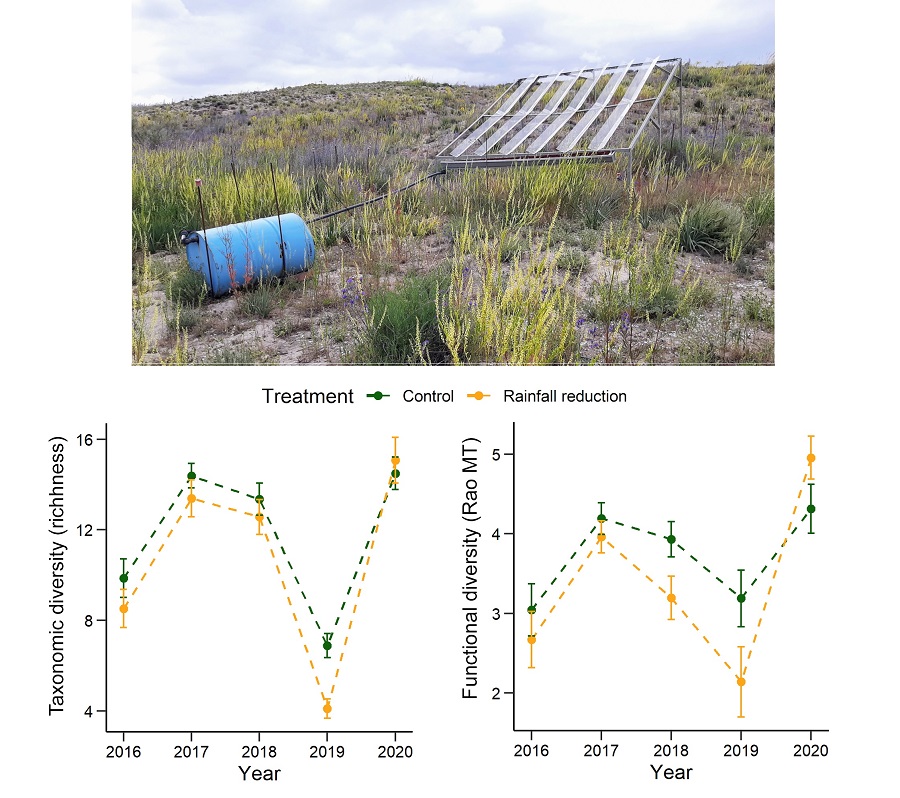URJC-UCM
Within the Mediterranean basin, semi-arid ecosystems are located where water is already a scarce resource and in which it is foreseeable that the progressive reduction in rainfall will have a negative impact. To analyze the effect of increased drought on the diversity of plant communities in these ecosystems, a research team from the Biodiversity and Conservation area of the Rey Juan Carlos University (URJC), in collaboration with the Complutense University of Madrid (UCM) ), has carried out an experimental study -with an observation period of five years- that reproduces the drought predicted by climate models.
The study has been carried out in the surroundings of the Regional Park of the Southeast of the Community of Madrid, less than 30 minutes from the capital. “In this protected area, the communities that develop on soils with a high gypsum content stand out. The physical and chemical restrictions that this type of substrate imposes on plants have given rise to tremendously diverse and highly endemic communities, with species that only appear on gypsum. However, their arid appearance and devoid of trees has meant that they have not been properly valued and that they sometimes present intense degradation”, says Roberto López Rubio, a researcher at the URJC.
The experiment has been carried out in the field, on real communities, and has allowed the scientific team to observe what the response of the species will be in a new scenario with a higher level of aridity. "We have focused on the annual cycle plant communities in which the bulk of plant diversity is concentrated in semi-arid environments," explains López Rubio.
The results of this research, recently published in the scientific journal Journal of ecology, point out that sustained drought has a negative effect on annual plant communities, reducing their functional and taxonomic diversity, especially when dry years follow one another. This means that the communities in conditions of greater aridity are made up of fewer species that, in addition, are species that are more similar to each other. However, this study has revealed that communities impoverished after dry years recovered diversity levels after a year with abundant rains. Therefore, according to the URJC researcher, "this demonstrates the resilience of these communities and their ability to overcome adverse weather, which at the same time gives them a certain ability to overcome climate change."
Although the work concludes that diversity levels will be maintained as long as dry years are interspersed with mild years, "the results achieved warn of the unpredictable consequences that climate change may have for this and other plant communities in these environments that in many cases are already at their tolerance threshold”, warns David Sánchez Pescador, a researcher at the UCM Department of Pharmacology, Pharmacognosy and Botany.
From these conclusions, new unknowns arise about the extent of this ability of plant communities to overcome the different scenarios of change or how many years of drought they would be able to withstand. “We must continue to observe to find out to what extent these communities are able to resist the reduction in rainfall and changes in the frequency between dry and rainy years. What is certain is that climate change is going to modify these communities and will probably make the species that are most sensitive to drought disappear from them, thus reducing their diversity, as we have observed in our study.”
This work is financed by a project of the Rey Juan Carlos University itself, GYPGENCOM, led by Ana M. Sánchez. In addition, this experiment is part of the European project Gypworld (H2020-MSCA-RISE/0350), led at the URJC by Adrián Escudero, whose objectives are to integrate and increase knowledge about the ecology and diversity that occur in systems with gypsum floors throughout the world. In turn, it belongs to the Drought-Net network, an international initiative that seeks to determine how drought will affect different terrestrial ecosystems worldwide.




